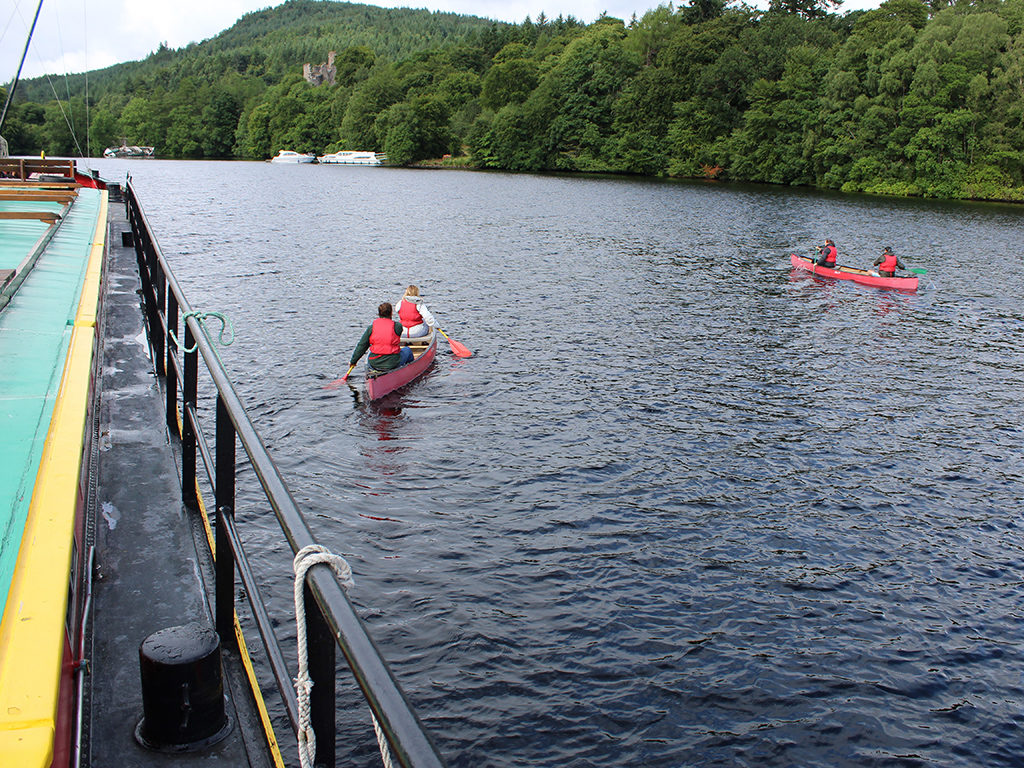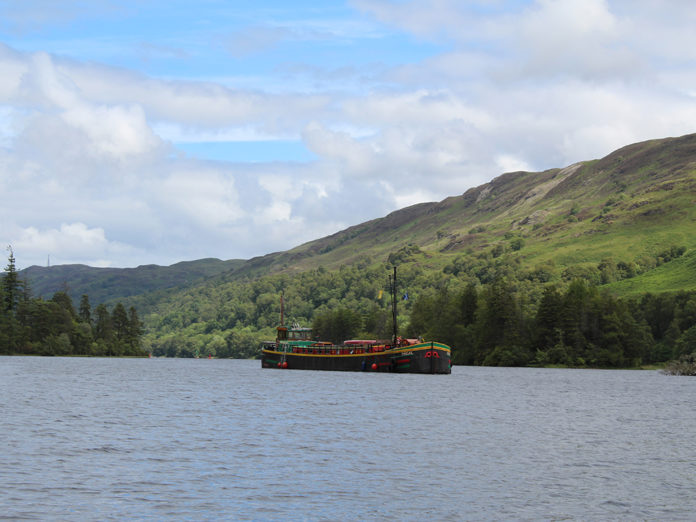With Caledonian Discovery, slow travel means doing as much or as little as you like – bike rides, walks or kayaking – as your traditional barge putters along Scotland’s majestic Great Glen
Scotland’s Great Glen slices through the Highlands at a diagonal angle, all the way from Inverness on the Moray Firth coast, through to Fort William and Loch Linnhe on the Atlantic Coast – a distance of some 70 miles.
Following a geographical fault line, it splits the Highlands down the middle, with the Grampian Mountains to the southeast and the wilder, more dramatic regions of Wester Ross, Caithness and Sutherland to the northwest.
A popular travelling route, the separate waterways of the Great Glen (the River Ness, Loch Dochfour, Loch Ness, River Oich, Loch Oich, Loch Lochy, River Lochy, and Loch Linnhe,) have been joined by the Caledonian Canal since 1822, which enables you to go by water from one end of the Great Glen to the other, without setting foot on land.
The Caledonian Canal was built under the instruction of Scottish civil engineer Thomas Telford (to earlier plans made by James Watt) – to the dual end of providing safe passage for shipping, as well as creating much-needed jobs to stem the flow of emigration following the Highland Clearances.
In reality, it wasn’t a huge commercial success, but following a visit by Queen Victoria in 1873, it soon became a hit with tourists, and by the 1930s paddle steamers were regularly seen ferrying around well-dressed passengers.
Though the steamers of yesteryear are now gone, the beautiful scenery that drew tourists here remains and as you enjoy a gentle cruise along its serene waters with Caledonian Discovery, you can choose to either treat the glistening lochs and ancient mountains merely as a backdrop to your leisure, or immerse yourself in the landscape with walks, bike rides, even kayaking adventures.

Caledonian Discovery offers cruises on board two colourful and charming barges, Fingal of Caledonia and Ros Crana and bikes and kayaks are free to use.
Cruises run in either direction but our pick would be to travel south to north, building up to the highlight of the cruise – the huge and fathomless Loch Ness.
On board, the barges are deceptively large. Each can accommodate up to 12 guests in private cabins (there are six en-suite twin cabins).
The living area is comfortable, with sofas, board games and lots of books to dip in and out of, and meals are eaten communally, alongside the very amenable staff, who you will come to be very friendly with by the end of your stay.
All meals are cooked fresh, with lots of choice (think homemade soup, stews and neeps and tatties) and food allergies and preferences are well catered for. It’s up to you how much you socialise with other guests and crew.
On the Discover the Great Glen Cruise Cruise (from £975 per week), you’ll get to travel the full length of the Great Glen – with plenty of time ashore visiting castles, villages and hidden woodland trails, with an expert guide in tow. Highlights includes cruising along the protected waters of Laggan Avenue and visiting the thunderous Falls of Foyers on the eastern shore of Loch Ness (look out for red squirrels en route).
Caledonian Discovery also offers lots of other themed cruises – we even heard whispers of a whisky one – and it’s a great way to explore this lesser-known part of Scotland, en route to arguably one of its most famous locations, Loch Ness, though Nessie sightings are not guaranteed.






 © 2024
© 2024